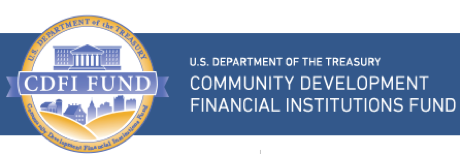The Vehicle … Qualified Opportunity Funds
March 2019

Are you an investor who paid taxes on significant capital gains you realized in tax year 2018 or expect to in 2019? If that describes you, now is the time to consider the potential tax savings of an investment in a qualified opportunity fund.
The Tax Cuts and Jobs Act (TCJA) provides for investment in Qualified Opportunity Funds (QOF) … touted by many tax experts and investors as the most generous tax incentive of this type ever. In exchange for significant tax savings, this provision of the new tax law is designed to motivate investors with realized capital gains to invest those profits in low-income communities.
The investment vehicle is QOFs and the payoff to investors is to defer, minimize or eliminate capital gains taxes. Low-income communities are expected to benefit from capital formation and job creation that otherwise would not likely be attracted to those areas.
OK. Let’s get down to the details. There are two primary benefits for investors who choose to participate in QOF investments.
• There is no cap on the amount of capital gains proceeds that may be invested;
• Capital gains are deferred with the potential to be “forgiven”;
✔ investments held for five to seven years reduces the capital gain by ten to fifteen percent.
✔ investments held for ten years may receive permanent exclusion of gain.
Note: Interested investors must exhibit a sense of urgency to participate in a QOF. Investors will pay tax on the deferred gain when they sell the QOF investment. Mandatory gain has to be recognized at the end of 2026 even if the investment remains unsold. So to enjoy the seven year fifteen percent “forgiveness” means the investment must be made before the end of 2019.
OK … consider this scenario. You, the taxpayer, realize an eligible gain. You choose to reinvest the gain within 180 days into a QOF which will defer the gain for the year of sale. Formation of a qualified opportunity fund may be organized as a corporation or partnership that invests at least ninety percent of its assets in QOFs. Investors have 180 days from the sale of an appreciated asset to invest in the fund and receive either stock or an interest in the business entity.
Once you have held your interest in the QOF for five years, you may exclude 10% of the original deferred gain. After an additional two years, another 5% of the original deferred gain is excluded. After an additional three years (a total of 10 years), you may sell the investment in the QOF at any time before 2048 and exclude the gain resulting from the sale.
Note: Eligible taxpayers include individuals, C corporations (including regulated investment companies and real estate investment trusts), partnerships, S corporations, and trusts and estates.
So let’s take a look at a hypothetical capital gain of $100,000 (just to make the math easy). Based on the above description it may look like this.
• Do nothing … pay taxes on capital gain of $100,000
• Invest in a QOF … capital gain deferred - at end of 5 years, taxable capital gain reduced by 10% = $90,000
• Invest in a QOF … capital gain deferred - at end of 7 years, taxable capital gain reduced by an additional 5% = $85,000
• Invest in a QOF … and hold for 10 years, taxable capital gain = zero!
Over 8,700 QOFs have been designated across the U.S. which creates a huge opportunity for investors seeking relief from some or all capital gains taxes. For a complete listing of designated QOFs as well as map locations, click on the CDFI Fund logo above.
Click here to access the IRS Frequently Asked Questions site regarding qualified opportunity zones eligible for QOF investments.
As the old saying goes, “There’s always more to the story” … especially as the new regulation may apply to your unique circumstances. There are a myriad of rules, exceptions to the rules, interpretations of the rules and special circumstances to be reviewed, considered and evaluated as to application of the law in each individual taxpayer’s circumstances. Some examples of details and pitfalls:
Partnerships: Under the new QOF rules … if a partnership realizes eligible gain, the partnership has a choice. It may elect to defer that gain at the partnership level, or it may pass the gain through to its partners, who are then free to make their own decision on deferral.
DIY: There are incidences of a fair number of investors who have set up funds and self-certified them, rather than consulting with a qualified attorney or accountant. The way the state tax and organizational documents are filed, no steps may be ignored, e.g. specifically indicating that the new entity is truly a QOF under the new tax law.
Land: Each state determines which areas qualify as a zone for QOF investments. These areas are based on income levels in the affected communities and the desire to attract private investment in specific census tracts. There are reports of errors on maps that negate an intended QOF investment. Again, the need to seek multiple sources for guidance including the Treasury’s website which lists approved census tracts.
So one-size-fits-all is not the answer … neither is do-it-yourself. Do promptly schedule a meeting with your tax advisor to determine how you may benefit.
Planning is the No. 1 thing we do at Blair + Assoc for clients to minimize your tax-bite and maximize what-you-keep after Uncle Sam is paid. The above article is but one tax planning strategy for taxpayers to consider.
We will help! Just give us a call or drop an email. We’ll respond promptly!


